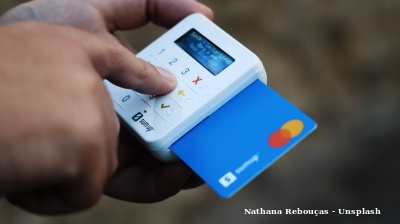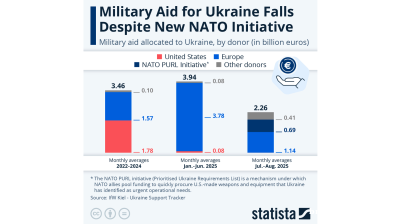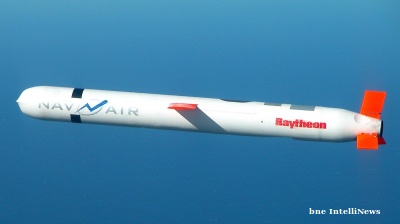Russia’s budget deficit increased slightly by RUB221.6bn ($2.3bn) in July, according to preliminary estimates, the Ministry of Finance (MinFin) said on August 8, increasing the total to RUB2.817 trillion ($29bn), or 1.8% of GDP. (chart)
In related news, the Central Bank of Russia (CBR) said sales of foreign exchange by big exporters was driving the value of the ruble down.
The increase in the deficit follows on from a surge in budget revenues in June of RUB813bn that cumulatively has shaved nearly RUB1 trillion off the deficit since the disastrous January result that saw the budget start the year with a whopping RUB1.7 trillion deficit. The June result brough the cumulative deficit down to RUB2.5 trillion and back inside the 2% of GDP MinFin target, after the deficit increased to RUB3.3 in May.
The July results will be mixed for MinFin, which is working hard to cut spending and find new sources of revenues, but keeps the hope that the deficit can be held to 2% of GDP this year. Previously Russian Finance Minister Anton Siluanov had warned that the deficit might reach 2.5% of GDP by the end of this year, but MinFin did not mention the 2.5% figure in its outlook when commenting on the July results.
Year-to-date revenue dropped by 7.9% on the year to RUB14.525 trillion. Oil and gas revenue plunged by 41.4% to RUB4.193 trillion in the period and non-energy revenue grew by 19.8% to RUB10.332 trillion, Prime reported citing MinFin’s results.
However, on a month-on-month basis oil and gas revenues in July exceeded RUB800bn – 5% more than in July a year earlier and the largest monthly value since the beginning of this year. Monthly revenues for January-June did not exceed RUB690bn. By August, the monthly dynamics of oil and gas revenues had reached a trajectory that exceeded their base level, the ministry said. In the last month of summer, the Ministry of Finance expects super-profits from the sale of energy resources.
Alexander Isakov, head of Russia and CIS macroeconomics at Bloomberg, predicts that total budget oil revenues for the full year will be about RUB9 trillion at the planned level. This is possible if the damper payments to oil producers are reduced by the end of the current year and the ruble exchange rate against the US dollar stabilises at the level of RUB90-95/$, the expert estimates. This year, the Ministry of Finance will be able to collect about RUB8.2 trillion in oil and gas revenues.
According to Isakov, non-oil and gas revenues in July 2023 turned out to be RUB100bn weaker than expected. This is probably due to VAT refunds, the analyst argues. According to Isakov, by the end of 2023 non-oil and gas revenues of the federal budget will reach RUB18 trillion and exceed budget forecasts by RUB800bn. The amount of non-oil and gas revenues approved by the budget law is RUB17.2 trillion. Isakov believes that further growth in non-oil and gas revenues will be associated with an increase in the tax base due to a recovery in demand and rising inflation, as well as due to additional excess tax revenues that will be credited in 2023.
Spending grew by 14% to RUB17.341 trillion. July was the second month in a row that spending momentum declined, Isakov said. In June 2023, spending was also below the seasonal norm and the level of last year by about RUB330-360bn, Isakov said. “If this trend continues until the end of the year, then the pressure on inflation and the exchange rate from the budget may exhaust itself,” the expert believes.
The current budget says Russia’s budget deficit will amount to 2% of GDP, or RUB2.925 trillion, at the end of 2023. The current dynamics of revenue and spending fall in line with the target parameters of the structural balance encompassed by the law, the ministry said.
At the same time, the ruble remained under the pressure of a declining foreign trade surplus in July, as sales of revenue of exporters in foreign currencies fell by 1.6% to $6.9bn, the central bank said in a report on August 8.
"The amount of net sales of foreign currency by the largest exporters decreased by 1.6% (in July) from the level of June to $6.9bn from $7bn. The ratio of net foreign currency sales to the foreign currency revenue of the largest exporters (without the ruble component) amounted to 84% in June (after 88% in May with adjustments)," the central bank said.
Sales of foreign currency by banks of systemic importance rose to RUB528bn in July from RUB377bn in June, with the largest banks being the leaders by sales. Smaller banks made net purchases of RUB524bn in July after 400bn rubles in June.
Data

India’s retail payment revolution
India’s payments landscape has reached a pivotal stage, with digital transactions now accounting for 99.8% of all retail payments.

Military aid for Ukraine falls despite new Nato PURL initiative – Statista
The Kiel Institute for the World Economy found that military aid to Ukraine dropped sharply in July and August compared to previous months, despite the implementation of the Nato PURL initiative.

IMF cuts Russia’s 2025 growth forecast to 0.6%, leaves Ukraine's unchanged at 2%
The International Monetary Fund has lowered its forecast for Russia’s economic growth in 2025 to just 0.6%, marking the second-steepest downgrade among major economies, even as it raised its global outlook.

Russia's PMI indices plummet as economy cools
Russia’s private sector entered deeper contraction in September, as both services and manufacturing activity declined, according to the latest PMI data published by S&P Global.

__1.png)

